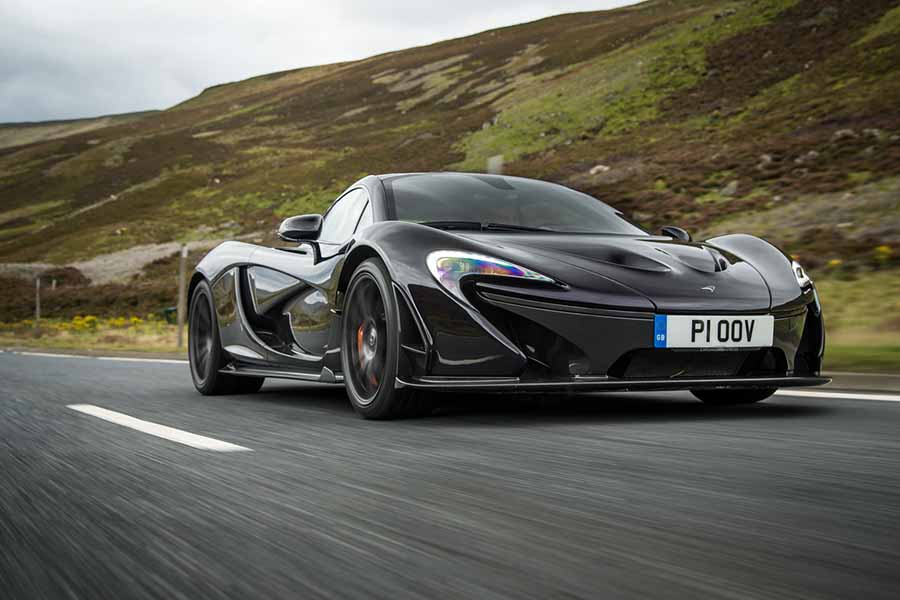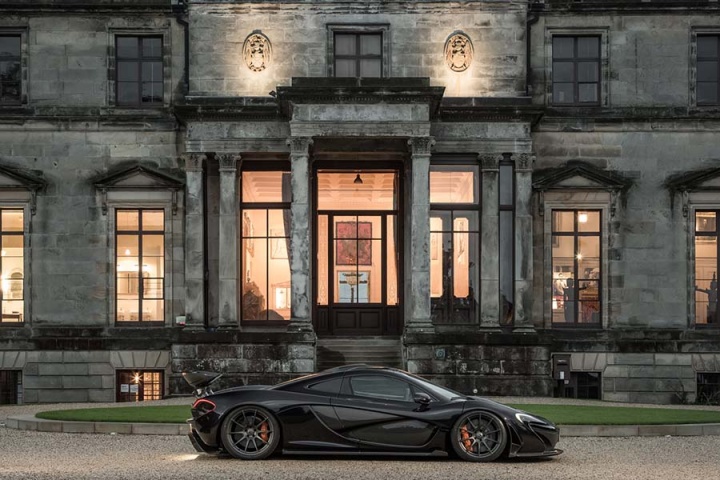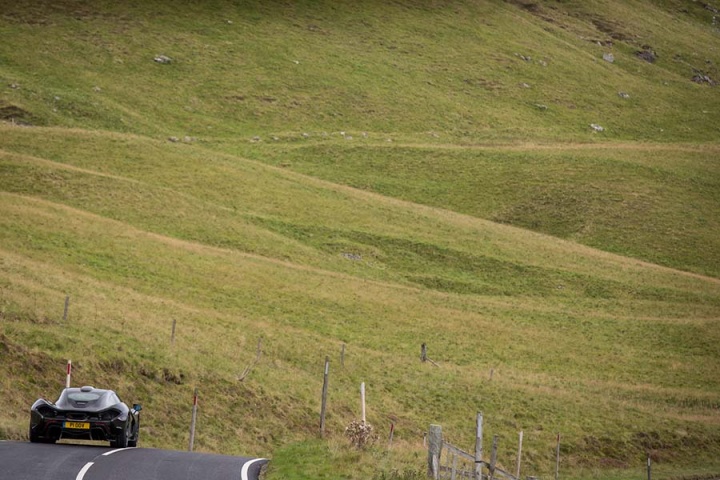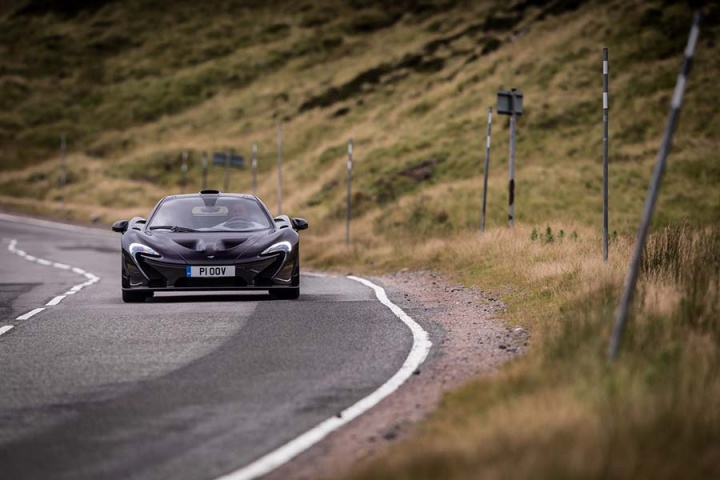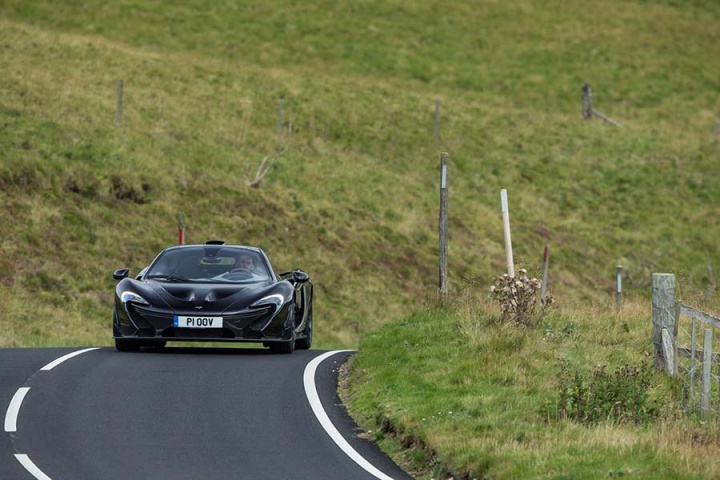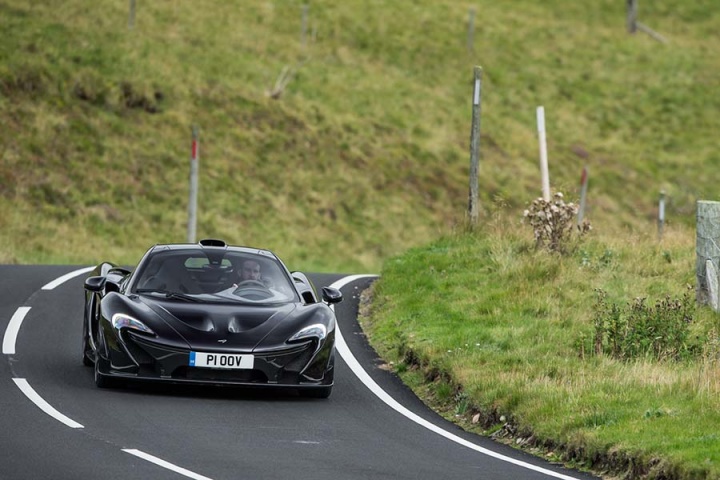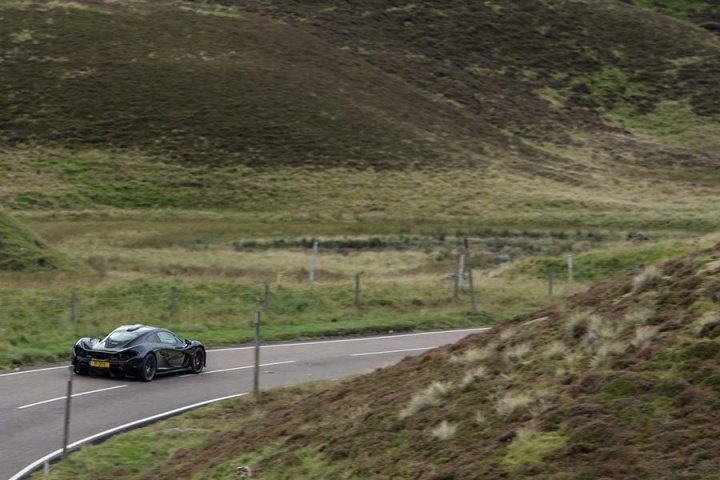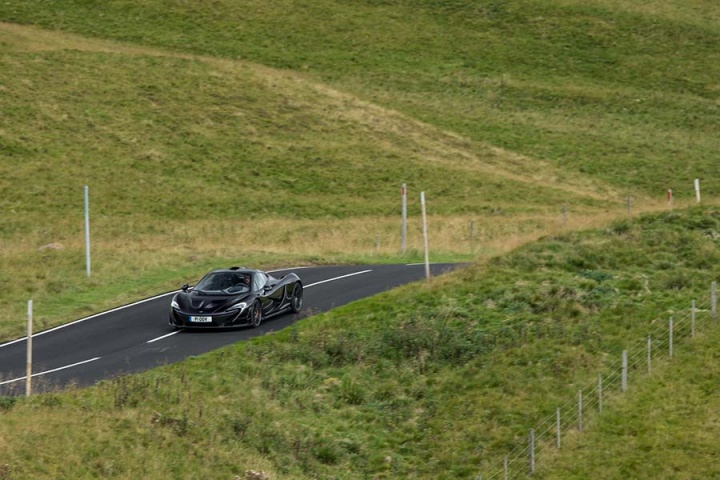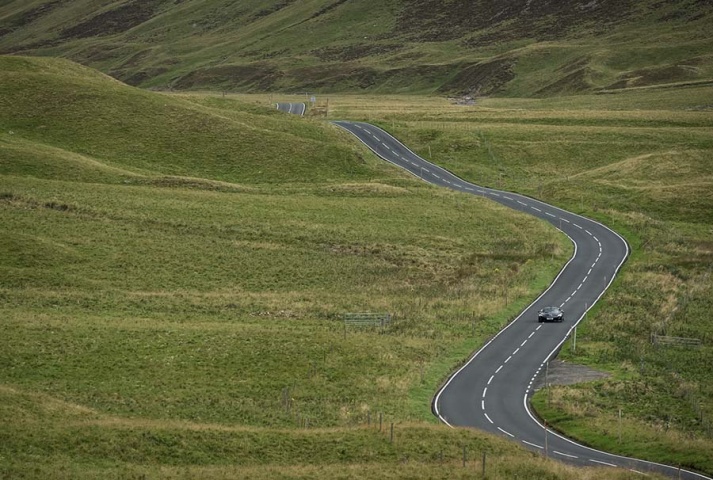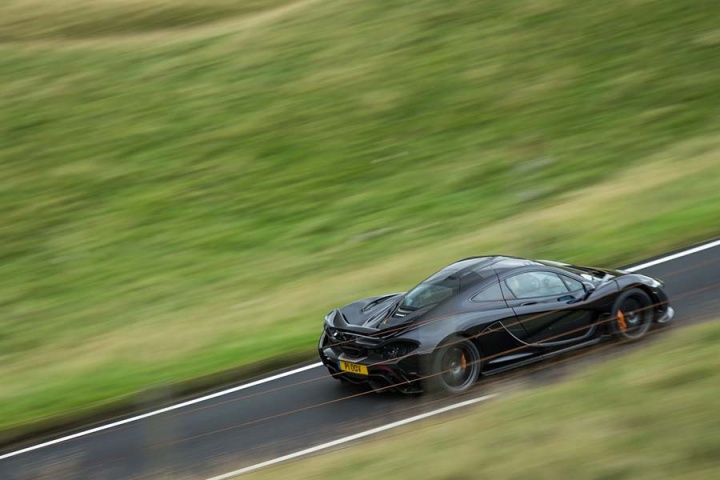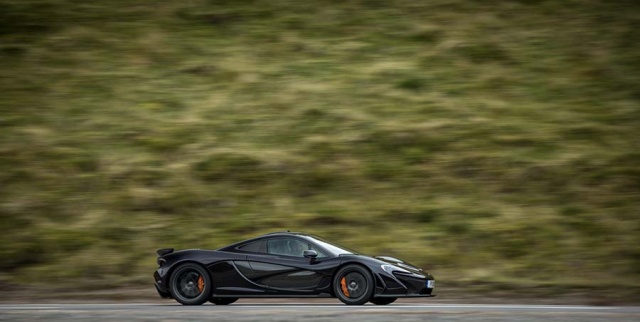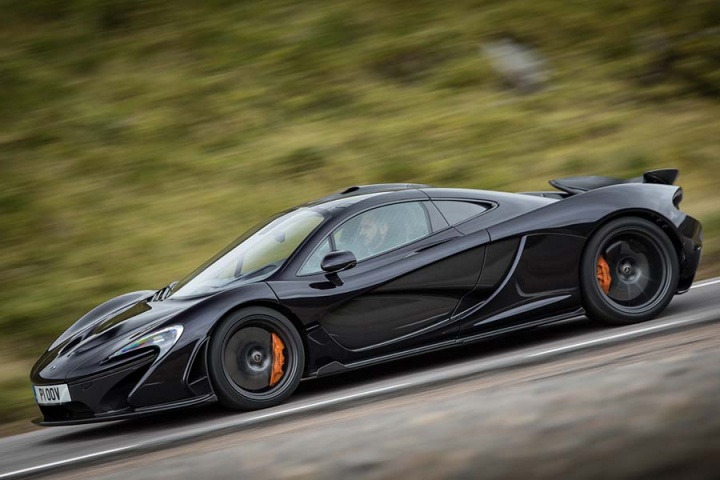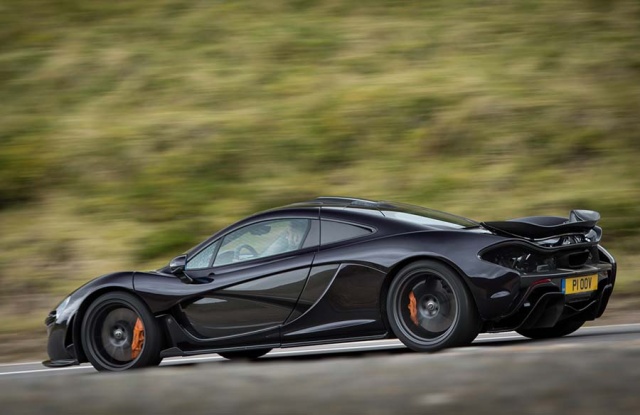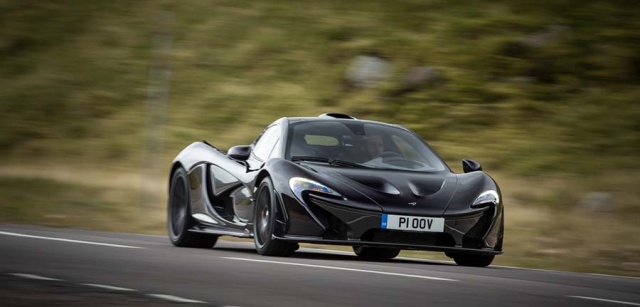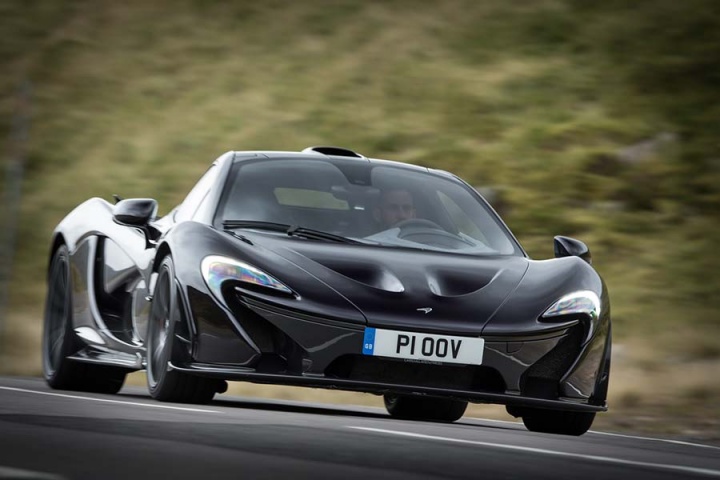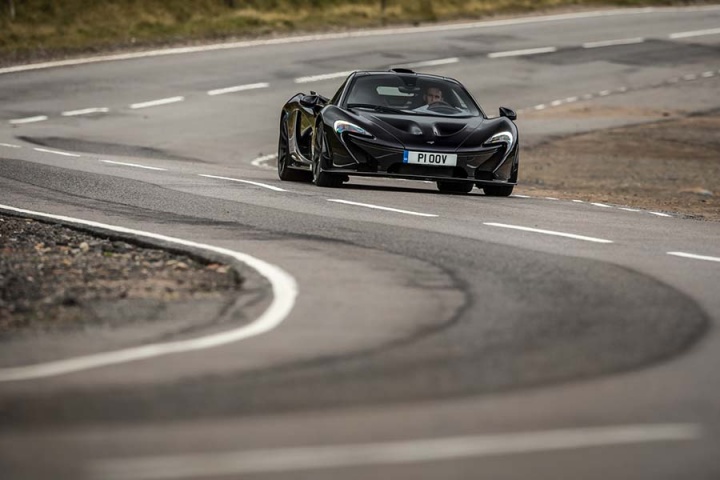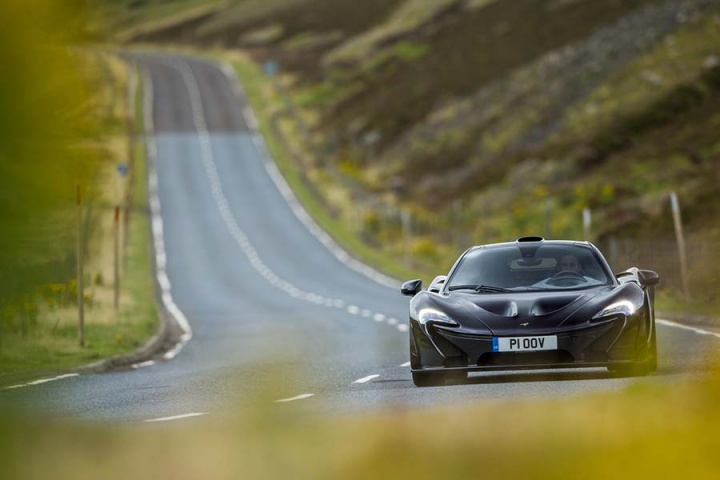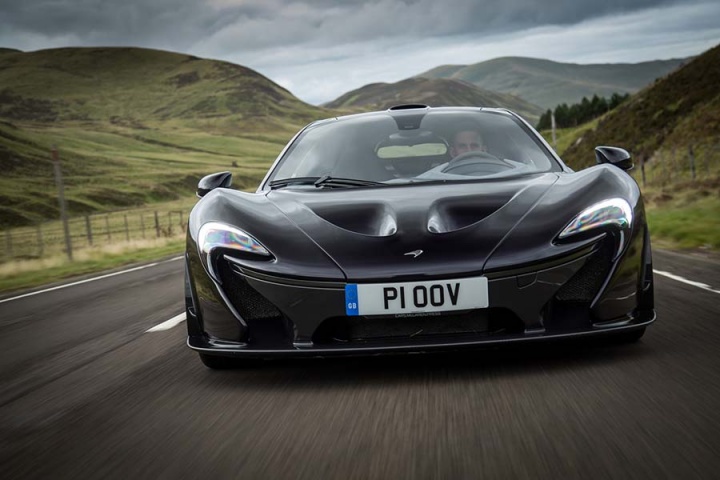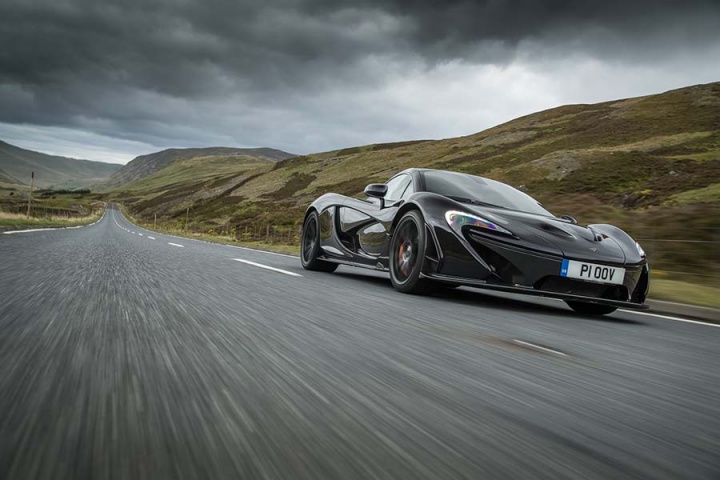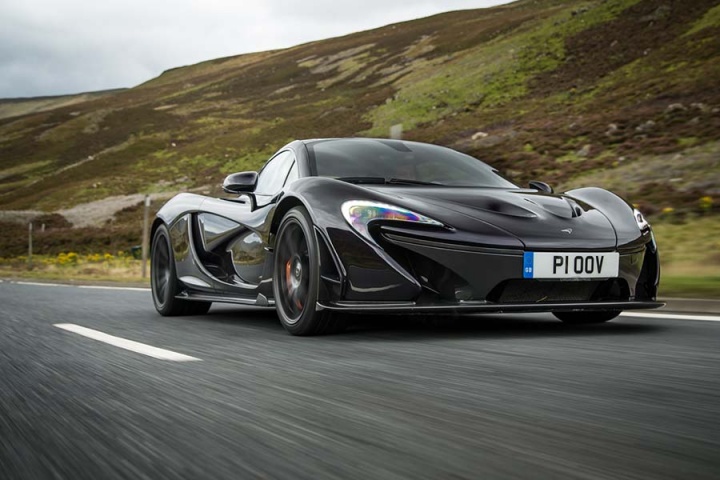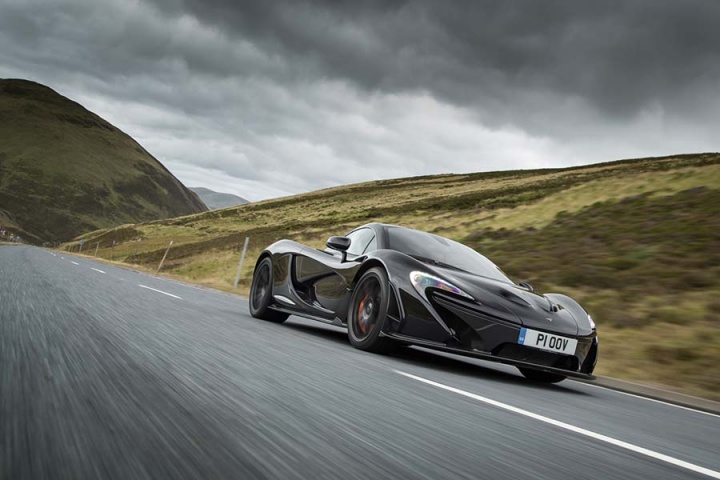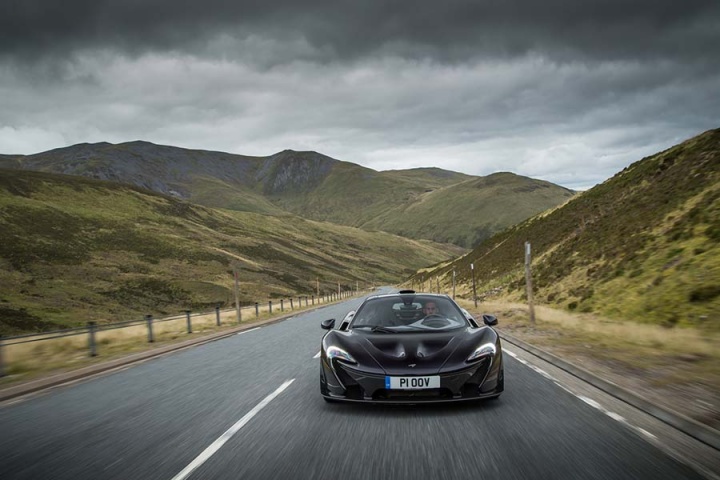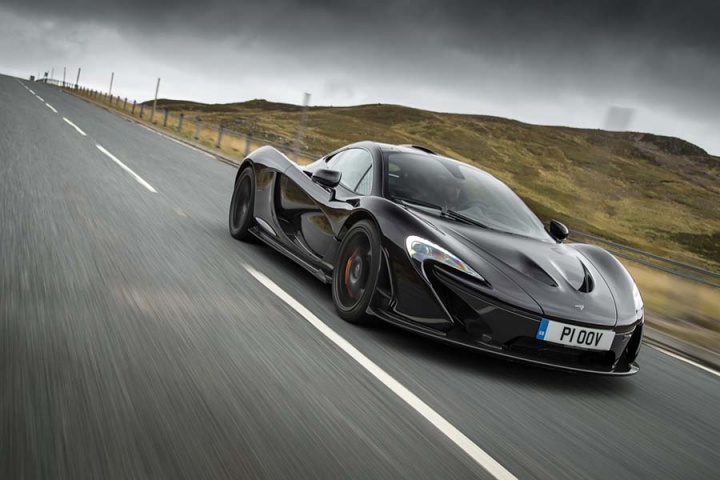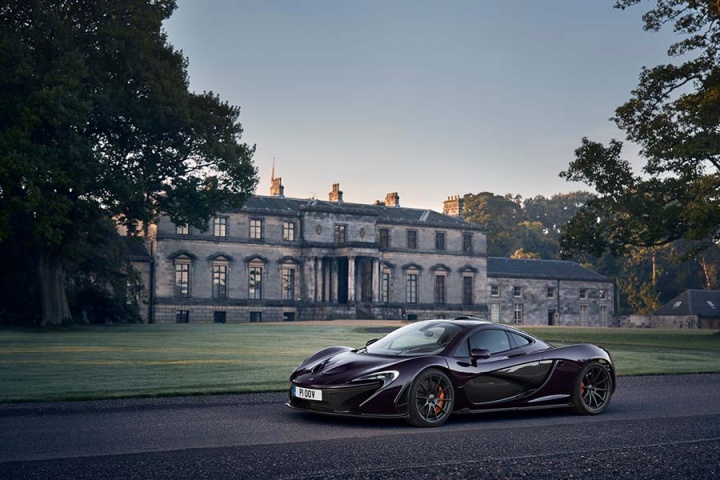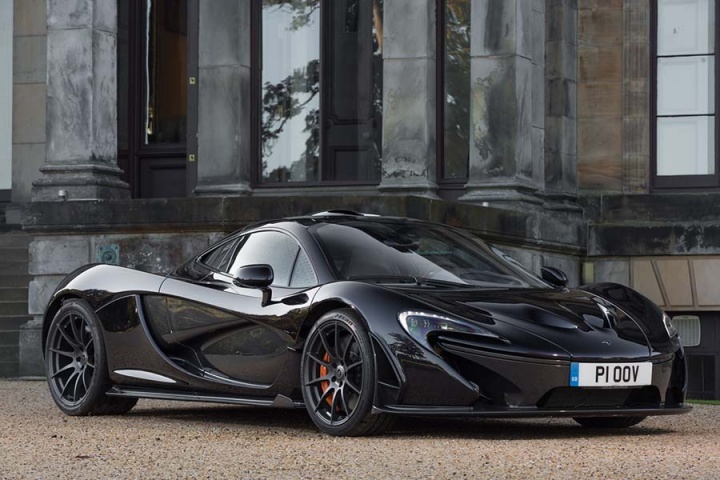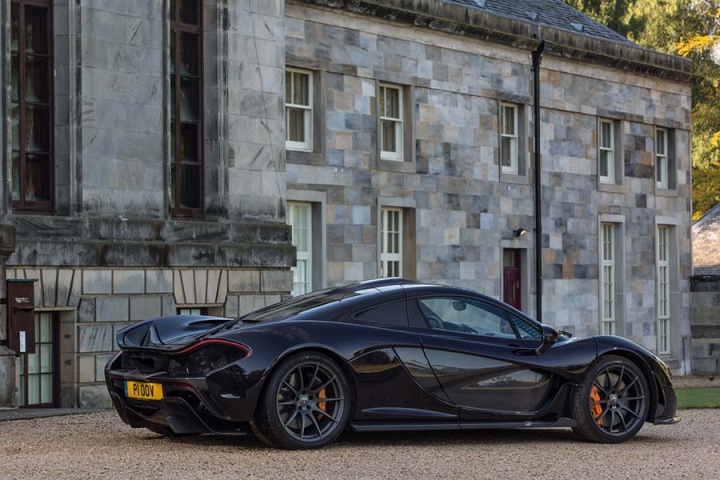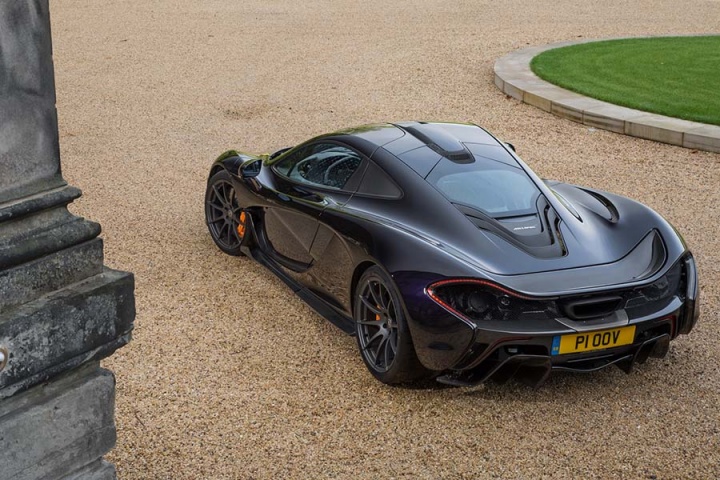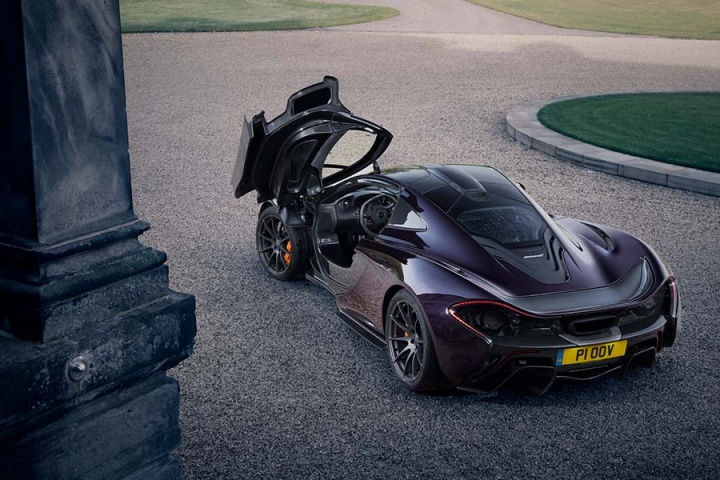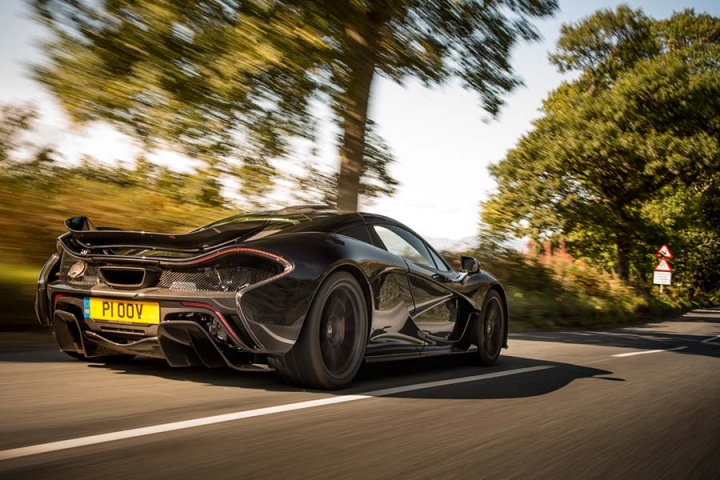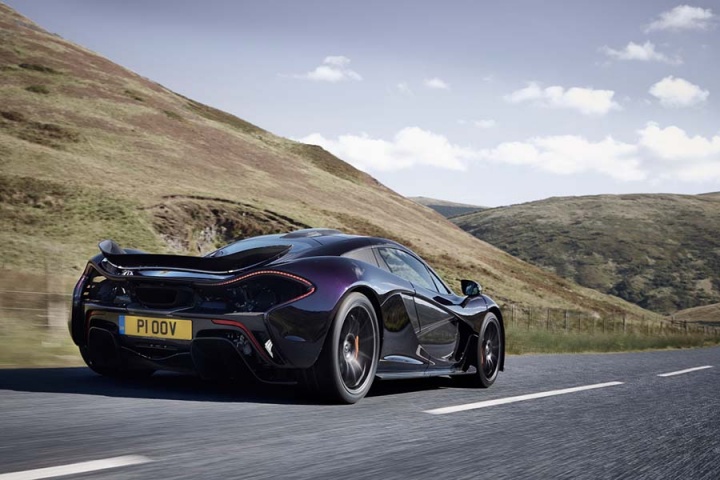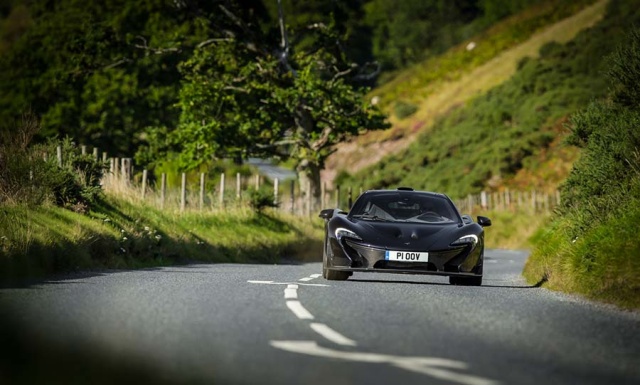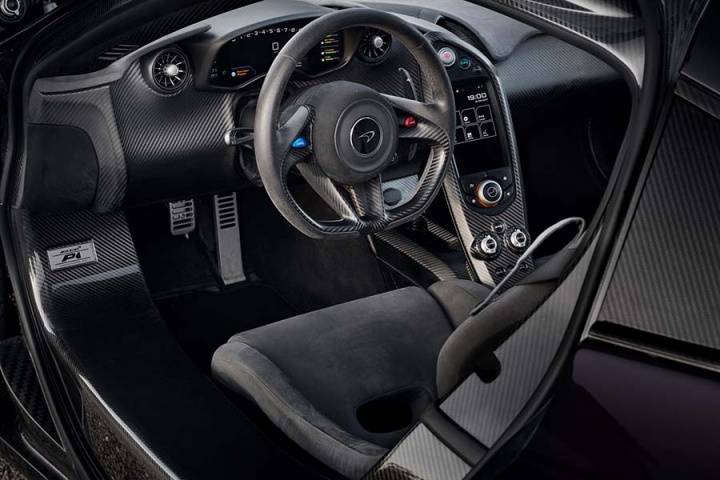We're five years late to the party, but a celebratory drive in McLaren's P1 hypercar plugs a gap in our knowledge - and scrambles our senses.
In the metal
Ludicrous as it may sound, the McLaren P1 looks familiar, not because they're ubiquitous, with only 375 P1s made, but because the P1 demonstrated to the world how future McLarens would look. There are elements of the 650S in profile, too, while plenty of the P1's style is apparent in the new McLaren 720S. The P1 is beautiful, compact and, yes, recognisable. This particular car, PP3 (Production Prototype 3), is unquestionably the most well known, having featured, at the last count, on over 100 magazine covers. The list of illustrious road testers' bottoms to have sat in its snug, lightweight bucket seats is as lengthy as the P1's performance is ridiculous, then, its significance underlined by the fact someone once offered McLaren £4 million (about €4.57 million at today's exchange rate) for this very car.
In Amethyst Black, it can genuinely be described as unassuming, a hypercar that's relatively discreet. Not all were, as virtually every one of the 375 went through McLaren's MSO division to be personalised to the owners' exacting requirements. You want exposed, coloured carbon fibre? That'll be over €100,000, though you get to keep the removed bodywork.
The engineering functionality is just stunning, such as the open mesh tail venting the engine and allowing a glimpse of the cooling fans, pipework and radiators behind. The body's shape is described by the slim rear lights and that bodywork is a product of aerodynamic necessity shaping and channelling air where it becomes useful, be it for force or cooling. The rear spoiler sits neatly, almost apologetically at the rear, unless you press Race mode, in which case it rises on beautifully engineered struts as the body lowers. Do that and the P1 takes on the hunkered down stance of a racer, with the aerodynamics to complement it.
The interior is pure McLaren, from the simple upright screen in the centre console to clear digital instrumentation, a low windscreen scuttle and surprisingly good visibility out. There's a glass canopy above in the lightweight (90kg) carbon fibre tub that makes up the core of the P1's structure, dissected by the doors' hinges. That roof and low scuttle give the cabin an airiness that's unusual given it's a super/hypercar; even so, that expansive glazing is low in weight - the P1's windscreen is thinner than that of its 12C contemporary, shedding 3.5kg in mass. Only the DRS and IPAS buttons on the steering wheel mark out the P1's cockpit from those of McLaren's bigger volume series models. Like the exterior, the interior is defined by its functionality, simplicity of form and ease of operation being the pleasing by-products.
Driving it
Ridiculous as it sounds, the current Super Series 720S's acceleration is only a scant 0.1 second slower to 100km/h than the P1. Such is the pace of development. There's a proviso, though; by double that the P1's pulled out a second, reaching 200km/h in just 6.8 seconds and adding another 100km/h for 300km/h in just 16.5 seconds. From standstill. That remains absolutely incredible and obliterates the iconic McLaren F1 before it, which would take another 5.5 seconds to reach that 300km/h figure. Yes, that F1 has the measure of the P1's top speed, but the P1's performance really is in the otherworldly sphere.
It achieves that while retaining what have become McLaren hallmarks. There's nicely weighted steering, the hydraulic assistance meaning there's some feel at the rim, the P1's wheel predictable and precise, the suspension mating fine control with compliance. It's taut and, undeniably, sometimes busy, but never intrusive, even on poorly surfaced country roads.
What defines the car though isn't its ride and steering, but absolutely savage performance. That, and the instantaneous response. The turbocharged 3.8-litre V8's already incredible 737hp output is aided by the integrated 179hp electric motor, filling where there would otherwise be turbo lag, and the result is immediacy that's better even than a conventional, naturally aspirated engine can manage. It's relentless in its force, yet, and unlike the 720S, the P1 is utterly bewitching to drive. Here it is a mass of contradictions, feeling like it's doing 150km/h when the speedo says 100km/h. The intensity of the experience is such that it scrambles your perception of speed, which is no bad thing when you've got 916hp at your disposal.
Pure speed and physicality of the acceleration aside, the engine's gasping, wailing notes only add to the intensity. It's raw and addictive, and the sounds complement the wild performance associated with it, the engine's outrageously vocal accompaniment at odds with McLaren's usually more muted tones. That's very demonstrative of every element of the P1, feeling like everything's been dialled up to the absolute maximum, in the pursuit of creating, in McLaren's words, the world's best drivers' car.
Even after five years, and the progress of its own models, the P1 feels utterly shocking, revelatory, a game-changer. While Porsche's 918 has that same capacity to shock and awe, it's the P1 that captivates more, engages and absolutely demands all of your attention. Those contradictions arise again though, as for all the P1's immersive nature, it's not tiring or intimidating, feeling at times ridiculously biddable and effortless. Push harder and the rewards are so intoxicating and so rich that you'll struggle not to be seduced. The force of that electrified engine overcoming the traction, the P1 moving around as you ask for more power, the relentless rush as it delivers it genuinely shocking.
The brakes are tasked only with braking, without the regenerative effect of most hybrids (though the battery does scavenge back power on the engine's overrun), the result a brake pedal that's firm and assured, the stopping power as startling as the acceleration. There's configurability within the drivetrain and chassis, with Normal, Sport or Track modes to choose from. Normal is anything but, Sport exactly that and a brief squirt around a speed-limited Knockhill circuit demonstrated that Track mode effectively turns the P1 into something that you could stick numbers on and go and win races in. There's an electric-only setting too if you want to sneak away from home silently, though if your driveway's more than 10 kilometres long you might still wake up the family.
What you get for your money
Good luck buying one for list price. They were all sold long ago, as were the 50 additional GTR track cars built for customers who inexplicably got in a P1 and asked McLaren if it could go faster. There are some for sale used, but expect to pay around double what it cost new. Nonetheless, and we're being serious here, we think it's worth it.
Alternatives
Bugatti Veyron: already quite old when the P1 and its rivals came along, but still a contender for outright pace. A Supersport can out-accelerate the P1 in its mid-range, which is staggering.
Ferrari LaFerrari: 'the Ferrari' follows the P1's hybrid assist route, only mates its spark to a V12 engine. We've yet to test one, but we don't doubt it's a serious foe for the McLaren.
Porsche 918: shocking performance with four-wheel drive, it's the most civilised of the three hypercars that includes the P1. Many buyers don't decide which to buy, instead having them all...
Summary
That McLaren produced such an incredible hypercar so early in its life as a car maker is little short of staggering. In the five years that have passed since it was launched the P1 remains an extraordinary car, but then, when you consider McLaren's form in the super/hypercar sphere, who'd bet against the already sold out, 106 build run, 'BP23 hyper GT' that's due in the next few years taking it to another level again?

